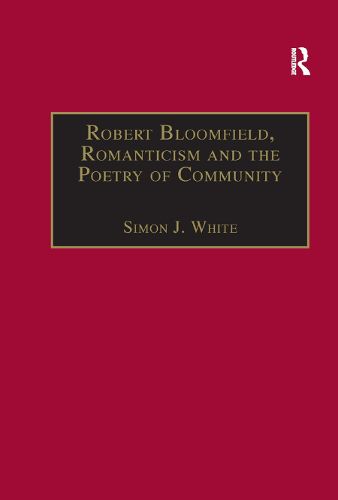Readings Newsletter
Become a Readings Member to make your shopping experience even easier.
Sign in or sign up for free!
You’re not far away from qualifying for FREE standard shipping within Australia
You’ve qualified for FREE standard shipping within Australia
The cart is loading…






Robert Bloomfield, whom John Clare described as ‘the most original poet of the age,’ was a widely read and critically acclaimed poet throughout the first decade of the nineteenth century, and remained popular until the beginning of the twentieth century. Yet until now, no modern critic has undertaken a full-length study of his poetry and its contexts. Simon J. White considers the relationship between Bloomfield’s poetry and that of other Romantic poets. For example, her argues that Wordsworth’s poetics of rural life was in some respects a response to Bloomfield’s The Farmer’s Boy. White considers Bloomfield’s emphasis on the importance of local tradition and community in the lives of labouring people. In challenging the idea that the formal and rhetorical innovation of Wordsworth and Coleridge was principally responsible for the emergence of a new kind of poetry at the turn of the eighteenth century, he also shows that it is impossible to understand how the lyric and the literary ballad evolved during the Romantic period without considering Bloomfield’s poetry. White’s authoritative study demonstrates that, on the contrary, Bloomfield’s poetry was pivotal in the development of Romanticism.
$9.00 standard shipping within Australia
FREE standard shipping within Australia for orders over $100.00
Express & International shipping calculated at checkout
Robert Bloomfield, whom John Clare described as ‘the most original poet of the age,’ was a widely read and critically acclaimed poet throughout the first decade of the nineteenth century, and remained popular until the beginning of the twentieth century. Yet until now, no modern critic has undertaken a full-length study of his poetry and its contexts. Simon J. White considers the relationship between Bloomfield’s poetry and that of other Romantic poets. For example, her argues that Wordsworth’s poetics of rural life was in some respects a response to Bloomfield’s The Farmer’s Boy. White considers Bloomfield’s emphasis on the importance of local tradition and community in the lives of labouring people. In challenging the idea that the formal and rhetorical innovation of Wordsworth and Coleridge was principally responsible for the emergence of a new kind of poetry at the turn of the eighteenth century, he also shows that it is impossible to understand how the lyric and the literary ballad evolved during the Romantic period without considering Bloomfield’s poetry. White’s authoritative study demonstrates that, on the contrary, Bloomfield’s poetry was pivotal in the development of Romanticism.